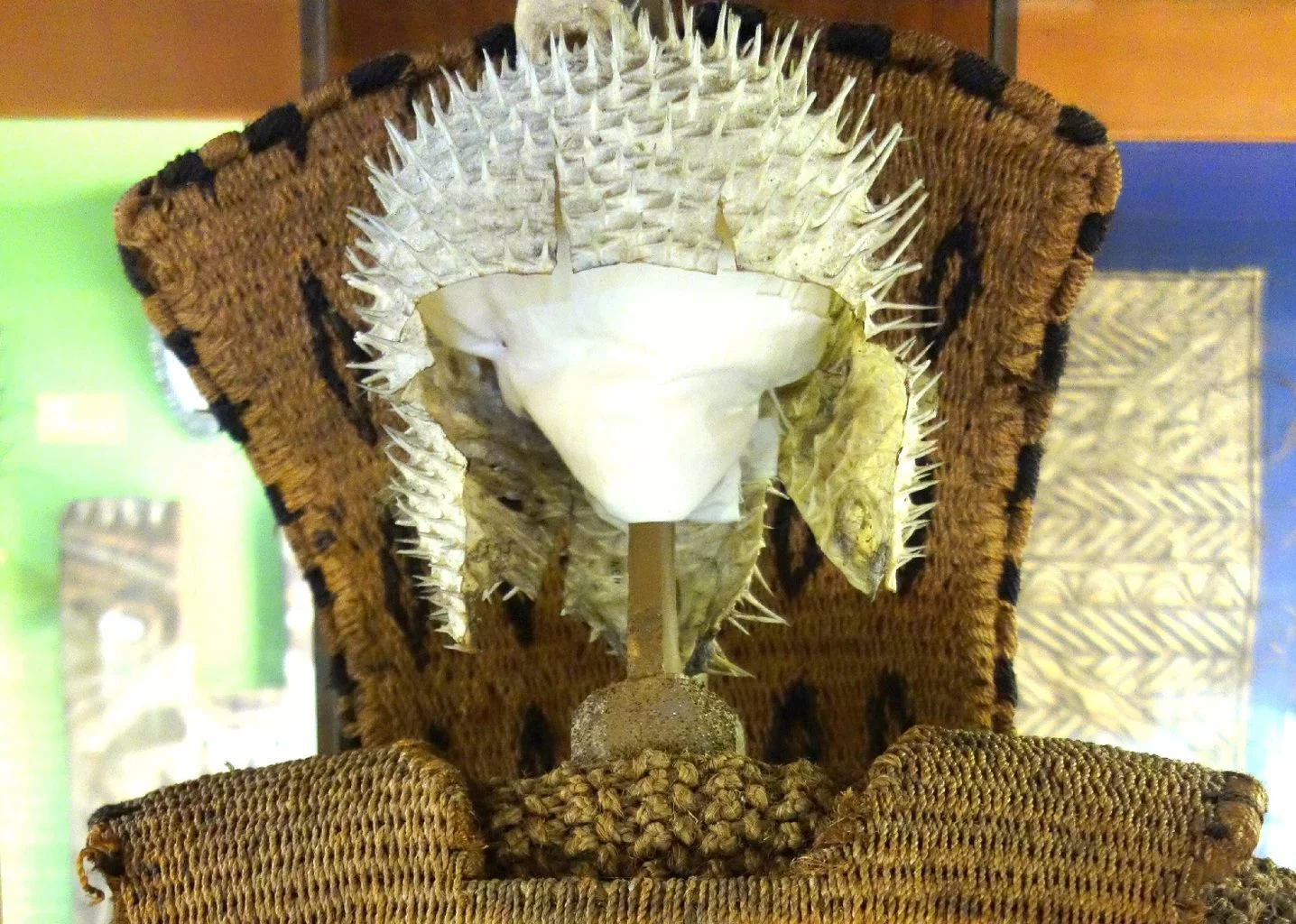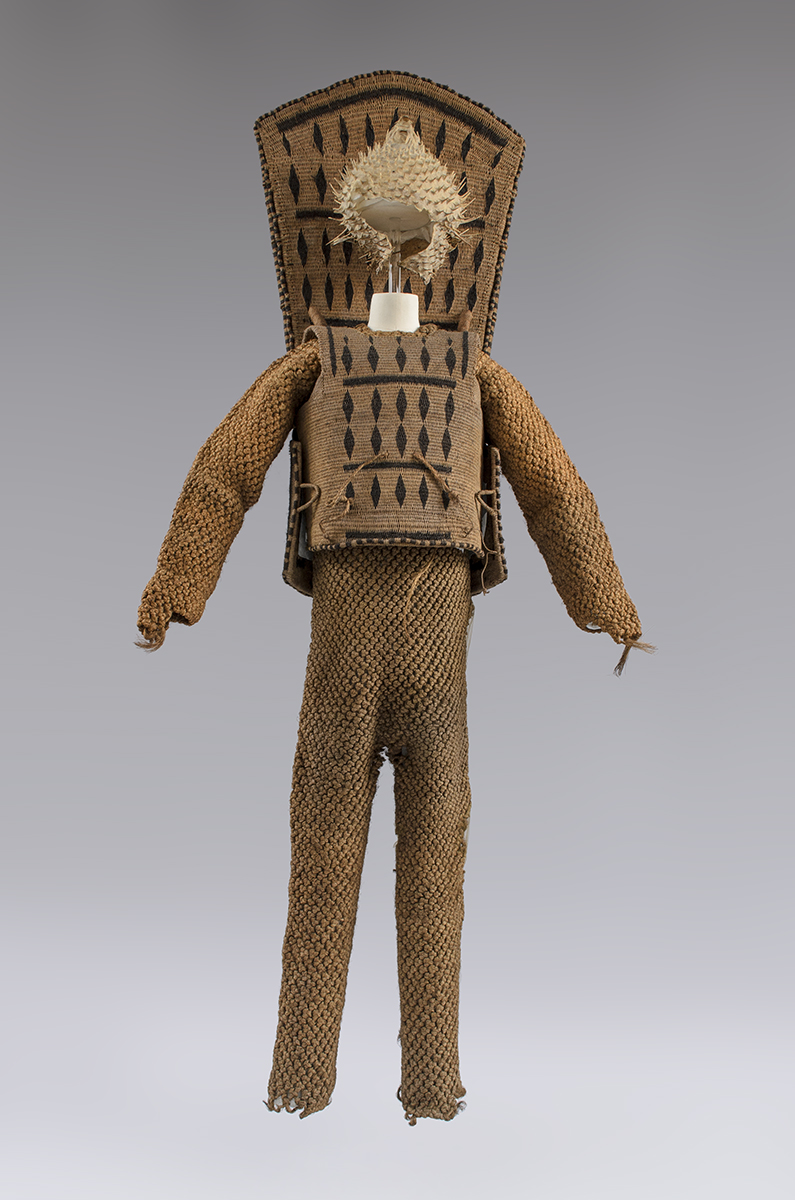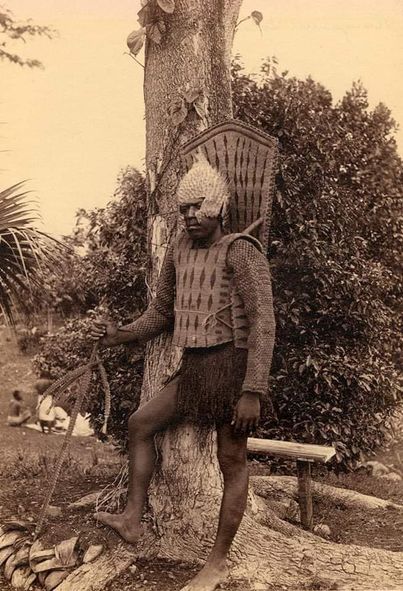Coconut Fiber Armor: The Special Warrior Tradition of Kiribati

In the vast expanse of the Pacific Ocean lies the Kiribati Islands, a remote archipelago steeped in history, culture, and tradition. Among the many treasures of Kiribati’s heritage is its distinctive form of warfare—a tradition unlike anywhere else in the Pacific. Unlike their counterparts in neighboring islands, the warriors of Kiribati donned armor woven from coconut fibers, a testament to their ingenuity, resourcefulness, and the harsh realities of life in the Pacific.

At the heart of Kiribati armour lies a profound connection to the natural world. The helmet, crafted from the skin of the porcupine fish, symbolizes the islanders’ intimate relationship with the ocean and its myriad inhabitants. With its spiny exterior offering protection against blows, the porcupine fish helmet serves as a potent symbol of strength and resilience—a fitting emblem for the warriors of Kiribati.
Similarly, the forearms of Kiribati warriors are shielded by a unique form of armour—shark teeth woven into intricate patterns of coconut fiber. These teeth, harvested from the apex predators of the ocean, represent both a formidable defensive barrier and a potent symbol of prowess and strength. Worn with pride and reverence, the shark tooth armour embodies the islanders’ mastery of their environment and their ability to harness its resources for their own protection.

Crafted with skill and precision, Kiribati armour is a testament to the islanders’ mastery of traditional craftsmanship and their deep respect for the natural world. Each piece is a work of art in its own right, painstakingly woven and assembled to provide maximum protection and comfort for its wearer. But beyond its practical function, Kiribati armour carries with it a rich tapestry of cultural significance, serving as a tangible link to the islanders’ ancestral past and their enduring spirit of resilience and survival.
One notable example of Kiribati armour can be found in the collection of the old Ethnologisches Museum Berlin, where a set of armour made in 1883 has been preserved for posterity. Displayed alongside other artifacts from around the world, this remarkable piece offers a glimpse into the martial traditions of Kiribati and the ingenuity of its craftsmen.

In March 2011, the collection was relocated to the Humboldt Forum on Museum Island in Central Berlin, where it continues to captivate audiences with its beauty and significance. Here, amidst the grandeur of Berlin’s cultural institutions, Kiribati armour stands as a testament to the enduring legacy of the islanders and their rich cultural heritage.
As we reflect on the legacy of Kiribati armour, we are reminded of the resilience and ingenuity of the islanders, who forged a unique tradition of warfare in the face of adversity. Through their mastery of natural materials and their deep connection to the ocean, they created a legacy that continues to inspire awe and admiration to this day—a testament to the enduring power of tradition and the human spirit.